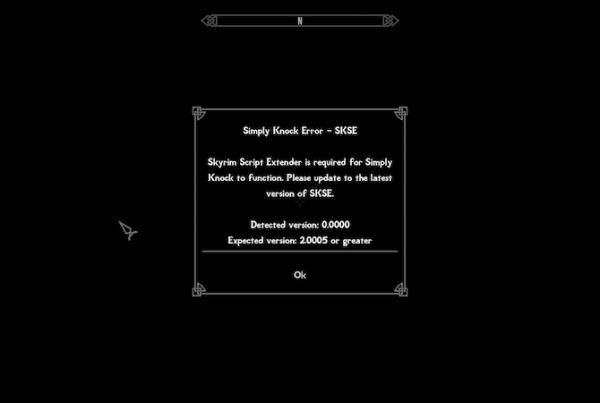In order to generate new customers for a website, there is the opportunity to place paid ads in search results, at the same time as search engine optimization (optimization of the technical and content components of the website). This is done through special paid programs offered by search engine operators. Google AdWords is a paid program that allows ads to appear in Google search results. Paid ads are displayed above the organic search results (left column) as well as on the right side of the results list. In professional jargon, these programs are also called "paid inclusion" or paid inclusion.
Google AdWords is a web-based platform that allows advertisers to place online business promotion in the form of text ads, banners, or product ads on the Google business promotion network. Google AdWords is currently the largest online business promotion network in the world. Google generates its profits almost entirely through Google AdWords.
History and background
The history of Google AdWords is closely tied to the corporate history of Google. During the two years after Google was founded, the search engine launched its own advertising platform. When Google AdWords was launched in short in 2000 as a beta version, the still young Google company earned a lot of criticism, since it was initially started with the promise of being free of commercial promotion. As we now know, they did not hold onto that. Currently, Google AdWords revenue is almost exclusively the company's profit. The degree to which the financial interests of the company take precedence over ethical aspects became clear again in 2013 when Google tested the placement of banner ads in the SERPs.
Let's go back to the story:
Shortly after launching with fewer than 500 advertisers, the AdWords system developed so well that the group was able to finish beta and release a final version. In the following years, Google AdWords expanded with versions in other languages. In 2004, German, Chinese, Spanish, and French were added. The number of advertisers using Google AdWords increased exponentially, as did business promotion revenue.
In 2006, Google AdWords changed the use of its own API to a payment model. At the same time, the official AdWords blog was created. It's still called "Inside AdWords."
A milestone in the development of the platform in 2008 was the introduction of ads specifically targeting specific devices, for example, Apple's iPhone. In the same year, Google also adapted its quality and business promotion guidelines for keyword and ad copy.
Four years later, YouTube also became part of the large advertising network. This step allowed advertisers to place video ads in addition. 2012 was also the year that Google established AdWords targeting alternatives.
The most recent development step was the introduction of Product Listing Ads (PLA) in 2013. Since then, listing on Google Shopping has been a paid service for e-commerce retailers. At the same time, the Google Merchant Center has been given a central role in managing the product catalog for PLAs, which are now being controlled by the AdWords system.
The continued expansion of the company's portfolio suggests that Google AdWords will experience further major adjustments in the coming years. Hence, it can be assumed that TV ads can be placed on Google TV, or other multi-channel ads will be feasible.
How does it work
Google has simply oriented the AdWords platform according to the auction process, which is usually based on the CPC method. This means that advertisers bid on a specific keyword that users type in Google Search. The advertiser has placed an ad or banner that matches this keyword. The advertiser competes with other bids on this keyword.
Lastly, Google controls ad placement based on multiple criteria and factors. A high click bid is often more likely to be prominently placed in ad space next to, above, and below organic search results.
The actual ad position for a particular keyword may depend on the following factors:
- Click on offer or price: Depending on the industry, clicks for keywords can range from 10 cents to $ 10.
- Keyword quality factor: The quality factor is used to establish the relevance of the keyword in relation to the landing page. Google's system also analyzes the click-through rate and experience of the target site. Therefore, there are three factors that determine the quality factor.
- Competition: The more competitors bid for a relevant keyword, the higher the click price.
- AdWords account history: AdWords account history can also be included in the keyword price calculation. Accounts that never update their keyword lists and don't optimize their ad groups often have a downside.
- Audience segmentation: The segmentation alternatives can also vary the price of the click. For example, if the keyword is too broad and is intended for cross-regional ad placement.
- View form: When on-screen ads are keyword driven, the click price can be higher than text-only ad placement.
Create an AdWords account
A Google AdWords account usually has a clear hierarchy. Campaigns will be created at the top level. This is where advertisers have the ability to specify daily budget and targeting. Other ad placement methods can be configured. Multiple campaigns can be created per AdWords account.
A campaign itself is about ad groups, for which the relevant keywords are stored in the system.
It is essential that the campaign budget can only be specified within the campaign alternatives. If you only have to target certain products, it is generally important to highlight creating multiple campaigns to drive budget distribution.
It is also recommended to follow the structure of the advertised online store or the advertised information website when creating the campaigns.
AdWords campaigns also can be managed and organized offline with the Google AdWords editor.
Possible alternatives for commercial promotion
Google Adwords offers advertisers different ad formats, which can be adapted to their marketing activities. All advertisements are reviewed by the system before being placed. These ad formats are briefly outlined here:
- Text-based adsThese two-line ads are the classic Google AdWords ad format. They consist of a title, a copy of the ad and a link that is displayed. The title contains 25 characters, the ad text a total of 70 characters (evenly distributed over two lines) and the displayed link of 35 characters. No special characters can be used in ad text. Exclamations or question marks can only be used once.
AdWords ads appear alongside, above, or below Google organic plug-ins, above Google Image Search, and publisher sites in the Google AdSense network.
- Advertising banners: These image ads can be placed on the Google business promotion network and appear on partner websites registered with Google AdSense. The supported file formats are GIF or Flash files. Banners can be created with your own tools or using AdWords tools.
- Video Ads: Advertisers can advertise with their own YouTube video clips or movies on YouTube or with individual clips or channels.
- Product listing ads: Consists of theoretically classic image ads for products. These banner ads consist of a product image, product title, price, and certainly a slogan or a reference to a short ad. What is new is that the personalization is not done through the ad itself, but must be done in the product lists that the advertiser uploads to the Google Merchant Center. Your AdWords account is only used to set product groups or products to display.
- Dynamic Search AdsThese search ads are not created or written in advance, but are dynamically created by the AdWords system. These advertisements are based on the content of the advertiser's web pages.
- Click to call: This option allows users to call the company with a single click. For example, you can add the desired destination phone number for text ads.
Advertised products
Business promotion with Google AdWords is subject to country-specific rules. For example, weapons, tobacco, or toxic substances cannot be advertised through the AdWords platform. Similarly, restrictions apply to products that are intended for adults only and alcohol.
In addition, there are stricter restrictions on online pharmacies, which require that they first present their license to Google before they are allowed to post drug ads after verification. These strict guidelines have a very practical background. For example, in 2011, Google had to pay $ 500 million in fines because the company had admitted Canadian pharmacy ads, but this was not allowed in the United States.
There are also strict restrictions on the use of trademarks. Anyone wishing to promote and use the trademark must apply for a derogation and get specific permission from the trademark owner.
Failure to use trademarks can have a detrimental effect on ad placement and result in much higher click-through rates.
- Example: How can I create a text ad for the Apple iPhone where the protected terms "Apple" or "iPhone" cannot be used?
Billing methods
The most popular billing method for Google AdWords is CPC, equivalent to most SEA campaigns. In spite of everything, other billing modes are possible depending on the type of campaign and the orientation:
- CPA: The precondition for this billing method is that the conversion tracking tool has been set up. Once this is done, the highest feasible CPA or target CPA can be specified for each ad group, based on which Google will automatically use the campaign budget. In spite of everything, a mixed form is also feasible.
- CPM: The classic billing method for banner ads can be used for Google video or screen ads.
The advertiser then pays his invoice, either when a predetermined level has been reached or at a monthly price.
Keyword options
There are three different options for keywords:
- Exact match: For this case, the search engine must enter the keyword precisely as specified to trigger ad placement.
- Wide range: Modified word alternatives are used with this ad placement method, for example, through stemming to trigger the text ad.
- Matching phrase: This will also trigger ads when the keyword appears within a larger group of words.
In any ad group, advertisers can also work with negative keywords that are not supposed to be included as part of the keywords that trigger the advertiser's ad placement. This can be important when selecting the "matched phrase" option for a keyword, but the advertiser does not want their ads to appear when keywords and other brands are entered. In addition, the campaign settings can specify whether to pay attention to the related terms and spelling.
Placeholders can be useful for ad placement. You can put placeholders within ad text and title pages. The respective keyword is then used for ad placements. The use of placeholders is especially recommended for campaigns with large sets of keywords.
Segmentation with Google AdWords
The AdWords system also allows a differentiated segmentation. It has been used since 2013, regardless of automatic keyword and ad alternatives.
The following targeting options are possible:
- Regions: All ads can be delivered globally or regionally restricted.
- Languages: This option allows you to limit AdWords ads to specific language regions.
- DevicesText or on-screen ads can be specifically targeted at mobile devices, desktops, or both.
- Age groups: On-screen advertisements can target age groups.
- Time of the day: All ads can be limited or extended to specific days or hours of the day.
- Placements: On the Google Business Promotion Network, you can choose specific sites or apps for display ads.
- Interest groups: Ads on screen can also be aligned according to users' interests. Google will automatically find the matching locations.
- Affinity Categories: Google summarizes the possible topics that can be linked to the main topic. Again, the appropriate placements are selected automatically.
The reset has a special position within Google AdWords because it requires the relationship to the Google Analytics account and the adjustment of the tracking code. Specific retargeting goals are then set in the Analytics account, which can be accessed in the AdWords retargeting campaign account.
Google AdWords Editor
The Google AdWords editor allows advertisers to edit and manage campaigns and ad groups, as well as complete keyword lists on your desktop. Editing and optimization can be done offline and then all changes are uploaded to the appropriate account. The advantage of using the editor is that many different accounts can be edited and maintained.
More tools
- Planner Display: This tool helps in planning and creating banners.
- Keyword planner: You can identify new keywords and ad groups with this feature. At the same time, cost and traffic assessments can be achieved.
- Conversion Optimizer: If the advertiser has previously activated conversion tracking and the AdWords system has collected enough data, campaigns can be managed through the Conversion Optimizer. Google will place the ads according to the average target CPA or CPA.
Links to Google Analytics and the Google Merchant Center
Your Google AdWords account must be linked to your Google Analytics account. AdWords campaigns can also be examined with Analytics. At the same time, retargeting goals can be defined with Analytics. The relationship with the Google Merchant Center makes it possible to use PLA in the first place.
Advantages of Google AdWords
The Google AdWords system offers many advantages if you know how to use it. You can prepare and launch commercial promotion online relatively quickly. At the same time, campaigns can be controlled, paused or started by you. This provides a high degree of flexibility in business promotion. At the same time, reasonable cost control is feasible and there are numerous optimization options to reduce advertising costs in the long run.
Google AdWords is a kind of "start-up" aid for young online stores still receiving low organic search traffic, in order to receive visitors.
For agencies, Google AdWords is a great way to stand out. Google offers free Google AdWords certifications. The advantage as a partner is also the fact that you can manage multiple customer AdWords accounts through a customer center. In addition, reports for evaluations can be produced in the customer center.
Below is a summary of the essential features:
- Scope of relevant users
Users who specifically want a product can be contacted with commercial promotion in search engines.
- Cost control
You can specify a maximum Google AdWords budget that should not be exceeded. If your budget runs out, your ads will no longer run.
- Transparent evaluations
Extensive reports on ad placement performance provide a good basis for analysis and optimization. Google has a very large network of partners. Using this channel can be of great use to advertisers. Google AdWords ads can be displayed in three areas:
- Directly in Google search results.
- On the Google Display Network (GDN).
- With search partners like placements or placements.
Click fraud
Google AdWords campaigns can be manipulated by third parties with click fraud. For example, automatically generating ad clicks that do not represent interested users. As a result, the advertiser's daily, weekly or monthly budget is met more quickly, and the ads will no longer be placed from then on. The low number of simply interested visitors also reduces the ROI of the campaign.
SEO benefits
Google adwords it is not a relevant criterion for a good positioning in Google. Google also repeatedly claims that there is no connection between good rankings and the use of AdWords.
In spite of everything, an indirect effect can be theoretically established. The more traffic you get from AdWords, more data will Google obtain on visitor behavior. It doesn't matter if visitors come to your website through AdWords ads or organic searches. For example, if visitors come to your site through Google AdWords and keep the CTR or bounce rate low, Google will get an indirect indication of the quality of your website. As a result, Google AdWords is probably a supporting factor for a site's evaluation by search engines. Regardless, this would require a successful AdWords campaign.
The brand, in this case the name of an online store or a website can be strengthened. As a result, the number of direct and trusted registrations will increase. Increasing popularity can also increase the number of external links to the website in a natural way.






